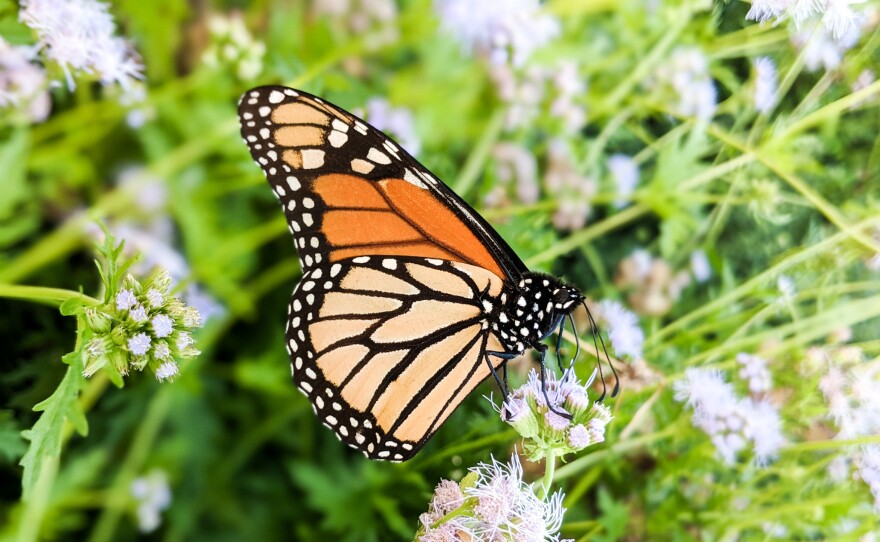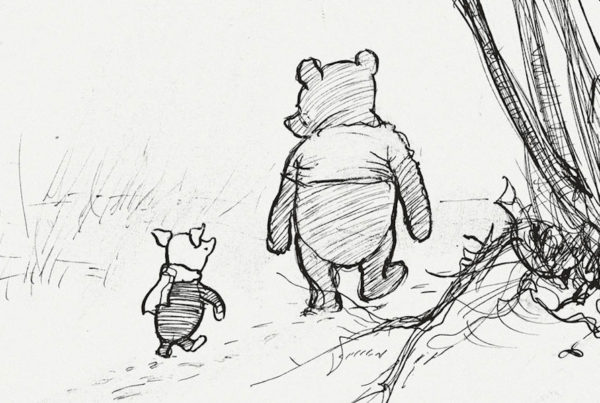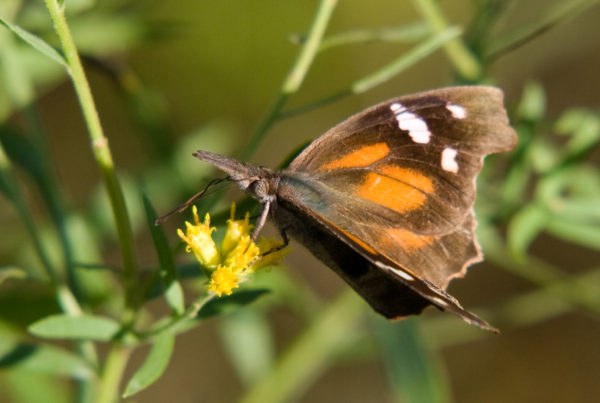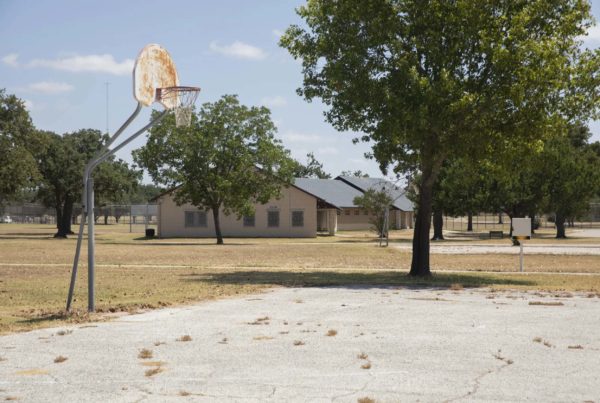From KACU:
The next cold front will usher in a staple of fall in Abilene. Monarch butterflies will be visiting the area as they make their way from Canada to Mexico for the winter. The newly endangered species faces extra challenges for their annual journey. But cities in their migration path can take steps to help.
Have you ever been on a long road trip where you don’t see a gas station for a concerning length of time? That anxiety-inducing scenario is all too real for the monarch butterflies migrating 2,000 miles across North America.
The population of the iconic insect has declined by 85% in the past 20 years. That makes it dangerously close to extinction.
Josh Brokaw, professor of biology at Abilene Christian University, says the main reason for the population decline is habitat loss. Monarchs have faced challenges throughout their evolution, but he says the combination of changing temperatures and a diminishing habitat is new, “Those two things happening at the same time is a challenge they haven’t had to handle before. It makes you wonder if that might be beyond their capabilities.”
Monarchs have lost their habitat for two reasons. The first is human intervention, things like illegal logging and deforestation in Mexico. Another factor is certain pesticides used in agriculture. Spraying crops like corn and soy kills everything except the crop. This includes pollinating insects, like butterflies, and the flowering plants they need for nectar.
Brokaw says the prairie-landscape the modern butterflies’ ancestors relied on is very different from the farms the butterflies will pass by in the fall, and there’s nothing that can be done at this point to fix it, “There’s no way we’re going to go back to having the 99% of tall grass prairies that we lost. There’s just no way that’s going to happen.”
» MORE: American Snout butterflies swarm South and Central Texas
Another issue the monarchs face is climate change. Clay Carbajal, the supervisor of conservation at the Abilene Zoo, says monarch butterflies need a plant called milkweed to reproduce, “I mean, a female monarch lays 200 eggs, or so. 200 eggs. And she lays them exclusively on milkweed plants. So without milkweed, the animal does not survive.”

A milkweed plant in one of the butterfly gardens at the Abilene Zoo. Even in a controlled climate, the drought and heat make it difficult for the milkweed to survive.
Photo by Sheridan Wood / KACU
Each butterfly lays one egg at a time, ONE egg to ONE milkweed plant. But, the crucial plant is diminishing because of widespread drought and wildfires. And despite recent rain across Texas, milkweed plants are small and scarce after the record-breaking summer heat and intense drought.
“Those migrating butterflies are going to come through here in the fall, and aren’t going to find those places to lay their eggs.”
Carbajal and other butterfly enthusiasts say people can help by planting milkweed in their yards or asking their city to stop mowing it down during migration season.
Jean Dottson, a Big Country Master Naturalist states, “We have an opportunity in the fall to provide nectar and milkweed that they can lay their eggs on and provide nourishment on their journey south.”
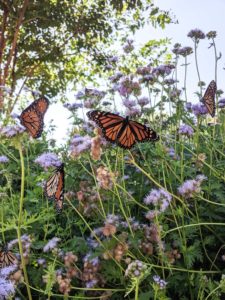
Monarch butterflies drinking nectar from a flower in a butterfly garden on Abilene Christian University’s campus.
She says conserving the butterflies is important not only because they are pollinating insects that aid in diversifying ecosystems, but also because the butterfly serves as a tiny diplomat on its cross-country journey, “It’s kind of an ambassador between Canada, the US and Mexico for conservation. We all are concerned about it.”
But for photographer and long-time butterfly observer Rendi Hahn, conservation of the butterflies is important simply because they are worth appreciating. “They are extraordinarily beautiful to me,” Hahn says. “I love the cycle of them coming and going.”
An influential environmental organization based in Switzerland recently listed monarch butterflies as endangered. But they won’t have federal protection until the US Fish and Wildlife Service deems them endangered.


